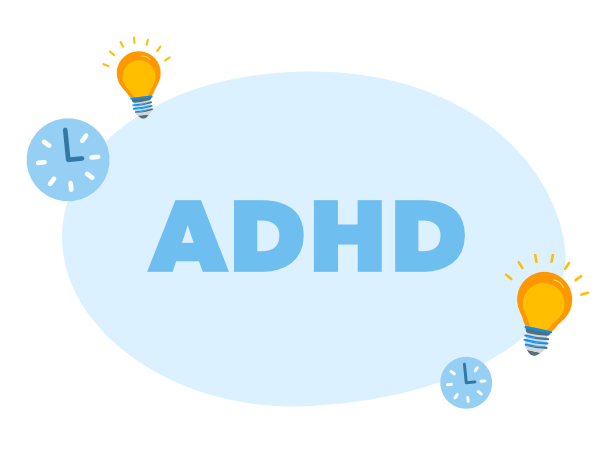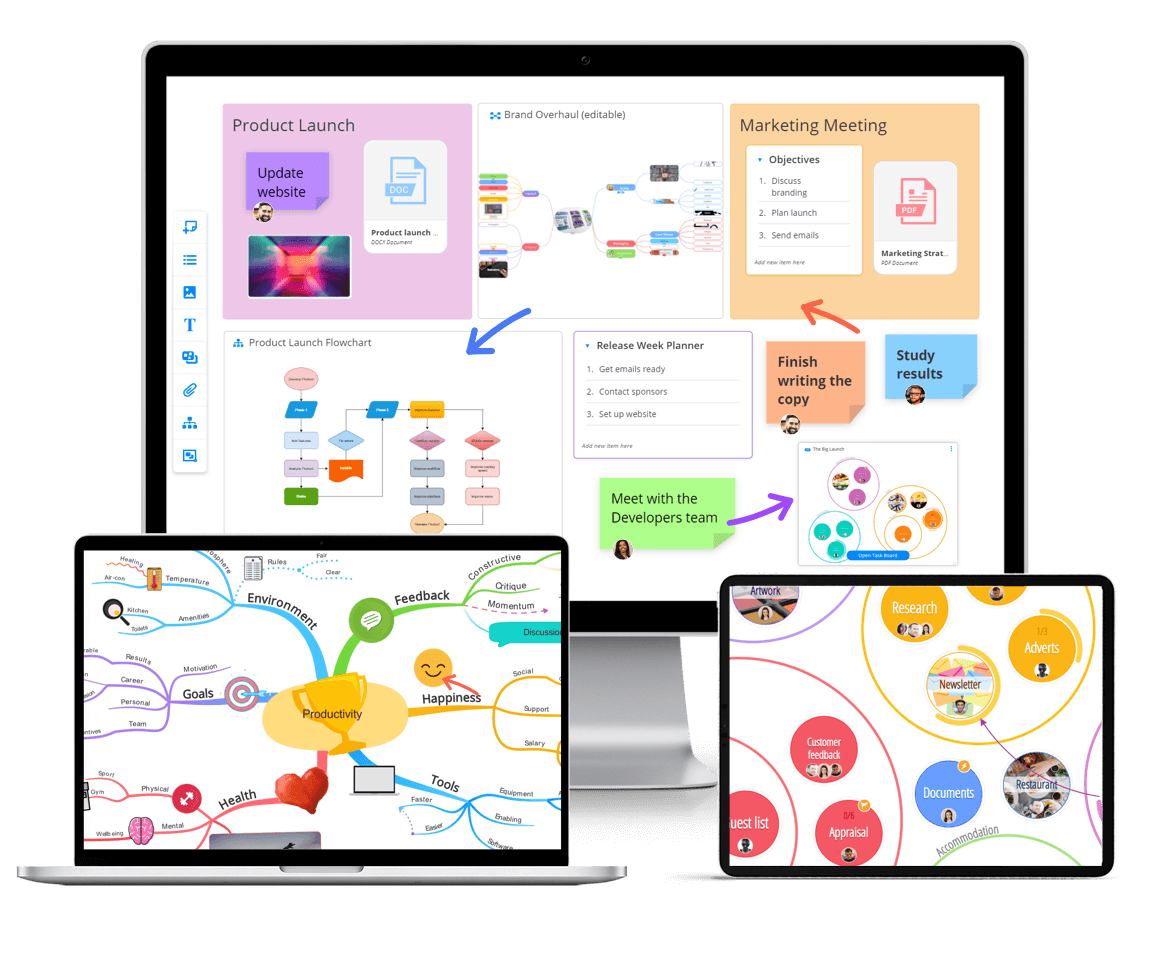October 20, 2022 (Updated March 6th, 2023)
ADHD 101: what you need to know about ADHD

From Hollywood stereotypes as ‘hyperactive little boys’ to controversy in treatment, attention deficit hyperactivity disorder can get a bad rep in the media and it’s meant that many people don’t really understand what ADHD actually is, or what the lived experience of people with ADHD really looks like. However, global prevalence of ADHD is expected to be between 2 and 7%, meaning a huge chunk of the world’s population go misunderstood. This article will give you a firm understanding of what ADHD is, the challenges and strengths of the ‘disorder’, plus tips and further resources if you or a loved one has ADHD.
What is ADHD?
ADHD is a neurological condition that primarily impacts a person’s executive functions, such as planning, organisation, or emotional regulation. It’s one of the most common neurodevelopmental disorders, but that doesn’t mean that only children have it. While you are born with ADHD, most people don’t grow out of it, and many adults may be diagnosed with it later in life.
Traits of ADHD
There are three main ‘types’ of ADHD, each with their own set of traits. Most people (but not all) with ADHD struggle with managing tasks, planning, organising, managing difficult emotions, and remembering, regardless of their type. This is because people with ADHD struggle with the part of their brain that manages executive functioning.

When a person is predominantly inattentive (ADHD-I), they may have a hard time focusing and paying attention to tasks or conversations, following instructions (especially verbal ones!), and may get easily distracted throughout daily life. They also have trouble with organisation and planning, and may repeatedly lose things or forget important events. This type of ADHD can be the hardest to detect and diagnose due to the lack of ‘visible’ symptoms.
A person with predominantly hyperactive ADHD (ADHD-H) may seem like they’re constantly on the go and driven by a motor. They may fidget, have difficulty staying still, talk excessively, struggle to wait their turn, and may not be able to go about daily activities or play activities quietly. This is what most people think of when they think of ADHD.
Combined presentation (ADHD-C) is, well, the combination of the both of these. A person will exhibit both hyperactive and inattentive traits persistently.
It’s important to note though, that the division of ADHD into ‘types’ is a very simplified and perhaps reductive way of viewing the condition. Just because a person is predominantly inattentive does not mean that they don’t exhibit hyperactive traits at times. These traits can also change over time: adults with ADHD are often less hyperactive than they were as children and may additionally become more inattentive, for example.
What helps with ADHD? Tips for people with ADHD
There are many apps, sites, products, and programmes declaring that they have the ‘solution’ to the problems faced by people with ADHD. But the reality is that no one strategy or tool can make the challenges of ADHD go away completely, and everyone’s brains works differently. While there are some things that really can improve a person’s quality of life and ability to better manage tasks and organise, it’s important to learn what works for you, or for your loved one.
This takes time, and can mean experimenting with a lot of different things. For some people, they might need an early morning and lots of exercise in order to focus properly, but for other people it might be a quiet environment with limited distractions. The main thing is to take note of what’s working and what helps you feel like the best version of yourself. If you struggle with recognising when you’re working at your best, you could always ask a trusted friend, colleague, or loved one to make a note of these things for you, and report back with their finding so that you can make a fully informed decision.
There are, however, general things that you can do to help improve your focus, memory, or emotional regulation. For example:
- Keep hydrated
It’s been shown that dehydration can further complicate issues of concentration, memory, and task performance for people with ADHD. But it can also be hard to remember to drink water when you have ADHD. Setting reminders on your phone, asking a friend to hold you accountable, or getting an absolutely massive water bottle can all help.
- Keep things where you can see them
This relates to the idea of object permanence (i.e. ‘out of sight, out of mind’). If you can’t see something you own easily, it means that your brain has to remember its location when you need it, but people with ADHD particularly struggle with this. So things that are at the bottom of drawers, at the back of shelves, or deep within our bags, simply don’t exist.
A way around this is to invest in storage and organisation systems that keep everything in plain sight. Think, open and shallow shelves, or hooks instead of drawers. Drawers where you can see everything at once. While this may look more cluttered to most people, it’s what will work with your brain and prevent you from forgetting or losing items, and from buying second copies of items you already own (guilty).
- Take time outs
It can seem that everything in life is complex, and none more so than emotions. Not giving the thoughts of others enough time to air, or your own emotions time to settle can easily lead to impulsive reactions which are not truly reflective of what is going on around you. Implementing enforced pauses before reacting to a situation can help lead to a regulated response which both your present and future self will appreciate.

Inclusive software for ADHD
There’s a lot of software out there that can help people with ADHD and other neurological differences (Ayoa is one of them!). If you’re in the UK, many are available for free through the Disabled Students Allowance (DSA) or Access to Work schemes, both of which can also provide support and assistance for other aspects of your condition too.
Strengths of ADHD
It can be easy to feel overwhelmed by the challenges of ADHD. But don’t forget, ADHD also comes with strengths that should not be overlooked such as:
- Creativity
Thanks to their brains being wired differently to neurotypical individuals, people with ADHD are renowned for alternative, creative output. Along with having this natural creative disposition, applying it effectively is something which people with ADHD are well trained at due to regularly having to cope in a world which isn’t designed for them.
- Spontaneity
Impulsivity isn’t always a negative. Confidence and optimism can lead to chances being taken rather than missed. Even if things don’t always work out, by taking action thanks to spontaneity, people with ADHD give themselves a chance to learn from experience which many people never get.
- Hyperfocus
Despite sounding like the antithesis of how ADHD is typically described, some of those with it can regularly experience bouts of intense focus. This can lead to them quadrupling-down on an assignment with laser focus, completing it with immense quality and at an unexpectedly quick rate.
- Problem solving
When a problem arises, it’s because an obvious answer doesn’t exist. Rather, a mystery is present. People with ADHD have a strong sense of unrelenting curiosity plus a desire to explore new nuggets of knowledge. Pairing this with a problem to be solved, usually only means one outcome – a lot of interest, determination and a problem solved.
Summary
With ADHD being a neurological difference affecting executive functioning, it is no surprise that it can have a large impact on the lives of many people. However, as highlighted in this article, there are many strategies to work with ADHD, not only to alleviate some of the ‘struggles’ it might cause but to also ensure that the benefits of it are able to flourish. Taking time to understand the challenges in more depth, and steps that can be taken to overcome them, can make a huge difference to those with and without ADHD.

Work with your ADHD
Make the most of your time and discover a more productive version of yourself with Ayoa, the neuro-inclusive online workspace built with neurodiversity in mind.
Try it for free
